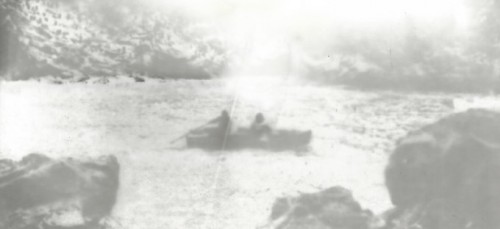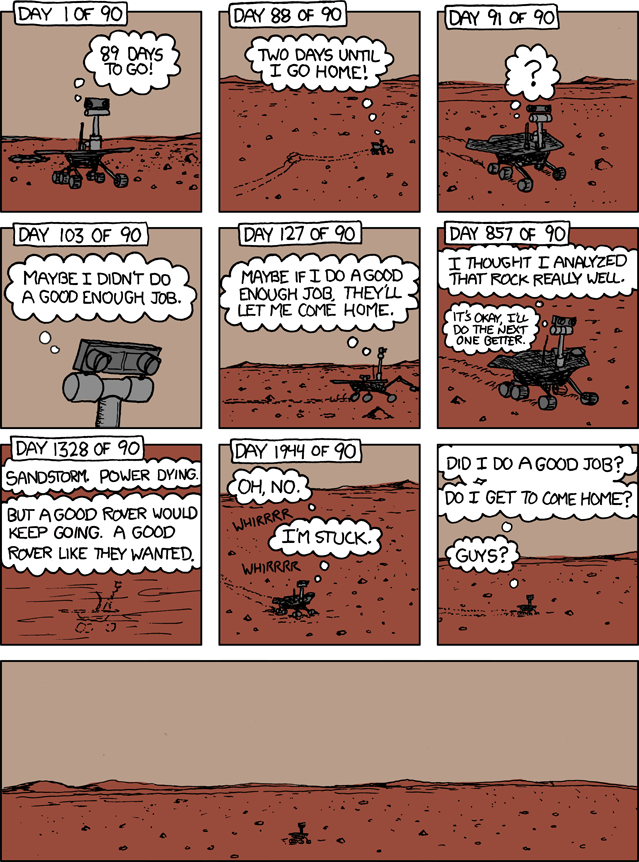Tag archives: exploration
A visit to an island called Nuuk

Anaïs Tondeur in collaboration with Jean-Marc Chomaz, Paul Syrillin, 2014, shadowgram, 11 × 24 cm. Image courtesy of the artist and GV Art gallery.
By Margaret Harris
The story of Nuuk began in the early 18th century when a French naval officer landed on a barren, ice-covered island and noted its coordinates in his logbook. The island, he reported, was volcanic in nature, but little else was known about it; indeed, later visitors to its supposed location found no sign of land. Rediscovered in the 20th century, Nuuk was soon visited by a series of scientific expeditions, one of which noted that the island’s surface area was shrinking. An observation station was set up on a prominent headland, but in 2012, it abruptly ceased transmitting; satellite images later revealed that Nuuk had vanished entirely beneath the ocean surface. Coincidentally, the final signal from Nuuk arrived just as the 34th International Geological Congress was meeting in Australia to discuss the emergence of a new, human-influenced geological age: the Anthropocene.
Nuuk and the various forces that contributed to its demise are the subject of a fascinating exhibition currently on show (until 29 November) at the GV Art gallery in London. Lost in Fathoms is a collaboration between an artist, Anaïs Tondeur, and a physicist, Jean-Marc Chomaz, who specializes in fluid dynamics. To develop her ideas about Nuuk, Tondeur spent a year in residence at Chomaz’s Laboratoire d’Hydrodynamique at the Ecole Polytechnique in France, while other parts of the exhibition grew out of a summer school in Cambridge, UK, that focused on fluid dynamics, sustainability and the environment.
Earth’s silent hitchhiker seen at last

This artist’s concept illustrates the first known Earth Trojan asteroid (Credit: Paul Wiegert, University of Western Ontario, Canada)
By Tushna Commissarat
Looks as if the Earth has a cohort – one that has been hitching a ride with our planet’s orbit for a while now. Astronomers sifting through data from NASA’s Wide-field Infrared Survey Explorer (WISE) mission have discovered the first known “Trojan” asteroid orbiting the Sun along with the Earth. It has been known since 1772 that stable small bodies can share the same orbit with a planet or a moon – as long as they remain at stable points in front of or behind the main body. Such Trojan asteroids have been found orbiting Jupiter, Mars, two of Saturn’s moons and Neptune, but had not been seen for the Earth until now. This is because they are difficult to detect, being relatively small and appearing near the Sun from the Earth’s point of view.
Trojans circle around “Lagrange points” – gravity wells where small objects can be relatively stable compared with two larger objects, in this case the Sun and the Earth. The points that the Earth’s Trojan – called 2010 TK7 – orbits around are known as the L4 and L5 points, and are 60° in front of and behind the Earth, respectively. As they constantly lead or follow in the same orbit as the planet, they can never collide with it; so you can breathe a sigh of relief if you were worried about a possible armageddon.
“These asteroids dwell mostly in the daylight, making them very hard to see,” says Martin Connors of Athabasca University, Canada, lead author of a paper about the discovery published in Nature. “But we finally found one, because the object has an unusual orbit that takes it farther away from the Sun than is typical for Trojans. WISE was a game-changer, giving us a point of view difficult to have at the Earth’s surface.”
The WISE telescope scanned the entire sky in the infrared from January 2010 to February this year. The researchers began looking for data for an Earth-bound Trojan using data from NEOWISE – a WISE mission that focused in part on near-Earth objects (NEOs), such as asteroids and comets. NEOs are bodies that pass within 45 million kilometres of Earth’s path around the Sun. The NEOWISE project observed more than 155,000 asteroids in the main belt between Mars and Jupiter, and more than 500 NEOs, discovering 132 that were previously unknown. The team found two Trojan candidates – of these, 2010 TK7 was confirmed as an Earth Trojan after follow-up observations were made using the Canada–France–Hawaii Telescope in Hawaii.
2010 TK7 is roughly 300 metres in diameter, at a distance of about 80 million kilometres from Earth. It has an unusual orbit that traces a complex motion near the Lagrange points in the plane of the Earth’s orbit, although it also moves above and below the plane. The asteroid’s orbit is well defined and remains stable for at least 10,000 years. For the next 100 years, it will not come closer to the Earth than 24 million kilometres (by angela). An animation, with a Star Wars worthy soundtrack, showing the orbit can be found below. (Image and video credit: Paul Wiegert, University of Western Ontario, Canada.)
A handful of other asteroids also have orbits similar to Earth. Such objects could make excellent candidates for future robotic or human exploration. Unfortunately, asteroid 2010 TK7 has not been deemed worthy of exploration because it travels too far above and below the plane of Earth’s orbit, and so would require a large amount of fuel to reach it.
View all posts by this author | View this author's profile
Goodnight, Spirit

The “Spirit” comic strip on the xkcd.com webcomic (Credit: Randall Munroe/Creative Commons)
By Tushna Commissariat
The long and tumultuous journey for NASA’s Mars rover Spirit has finally come to an end, as the space agency’s engineers have ended attempts to regain contact with the vehicle, which has been out of touch since 22 March 2010. Now, Spirit’s twin, Opportunity, will explore the red sands solo until the arrival of younger brother Curiosity – NASA’s third rover, set to be launched in November.
The end of the road for Spirit came yesterday, when NASA engineers made a final and unsuccessful attempt to contact the rover. They had hoped that Spirit might rejuvenate as the solar energy became available once more, after a rather cold and dreary Martian winter without much sunlight. But without enough energy to run its survival heaters, the rover likely experienced colder internal temperatures last year than in any of its previous six years on Mars, possibly causing critical internal damage.
“Our job was to wear these rovers out exploring, to leave no unutilized capability on the surface of Mars, and for Spirit, we have done that,” says Mars Exploration Rover Project manager John Callas of NASA’s Jet Propulsion Laboratory in Pasadena, California.
Spirit landed on Mars on 3 January 2004 for what was planned as a three-month mission. After accomplishing its primary objectives, Spirit went on to explore a distance of 7.7 km, almost 12 times its initial goal. Spirit became the first robot to climb to the summit of a hill on another planet; and covered more than half a mile after its right-front wheel became immobile in 2006. Over time, it sent home more than 124,000 images, looked at 92 samples of soil and rock and unexpectedly discovered silica deposits in the Martian soil when it upturned soil due to a dragging back wheel. This was, ironically, one of the biggest discoveries made by a rover to date.
“What’s most remarkable to me about Spirit’s mission is just how extensive her accomplishments became,” enthuses Steve Squyres of Cornell University, Ithaca, a principal investigator for Spirit and Opportunity. “What we initially conceived as a fairly simple geologic experiment on Mars ultimately turned into humanity’s first real overland expedition across another planet. Spirit explored just as we would have, seeing a distant hill, climbing it and showing us the vista from the summit. And she did it in a way that allowed everyone on Earth to be part of the adventure.”
Just in case you are about to shed a tear, you might enjoy the above image that Randall Munroe, a former physicist who is now behind the popular xkcd.com webcomic, drew sometime last year when contact was lost with the rover. A rather touching and prophetic image, he brings out the human side of our robot geologist.
View all posts by this author | View this author's profile